March 6, Acton Town Hall: Thirty-three fans of fine art were treated to a presentation by one of their neighbors, as sculptor, essayist, and poet Meredith Bergmann, an Acton resident, offered a talk about her work, complete with a comprehensive slideshow. Part of the Acton 250 celebration, the program was called, “A sculptor speaks for her statues”.
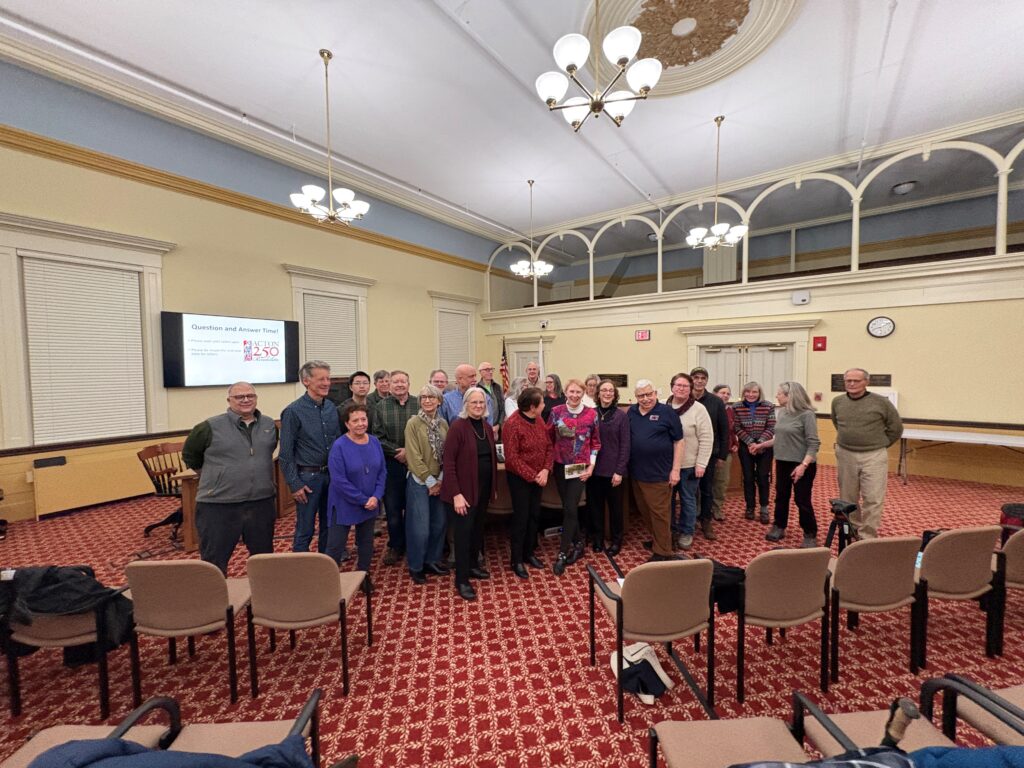
For an artist who admittedly did not have a passion for history until her forties, Ms. Bergmann’s work covers an impressive array of historical figures, with a focus on pioneering women. They include the singer Marion Anderson; the first female member of a presidential cabinet, Frances Perkins; and the late Supreme Court justice Ruth Bader Ginsburg. Her sculpture showing Sojourner Truth, Susan B. Anthony, and Elizabeth Stanton became the first one in New York’s Central Park depicting women.
Closer to home, Lexington’s Battle Green’s statues also portrayed only men until the town’s “LexSeeHer” group advocated for one to honor women. Bergmann’s Something is Being Done statue pays tribute to the bold women of Lexington who have contributed their talents, from the Revolutionary War up to today.
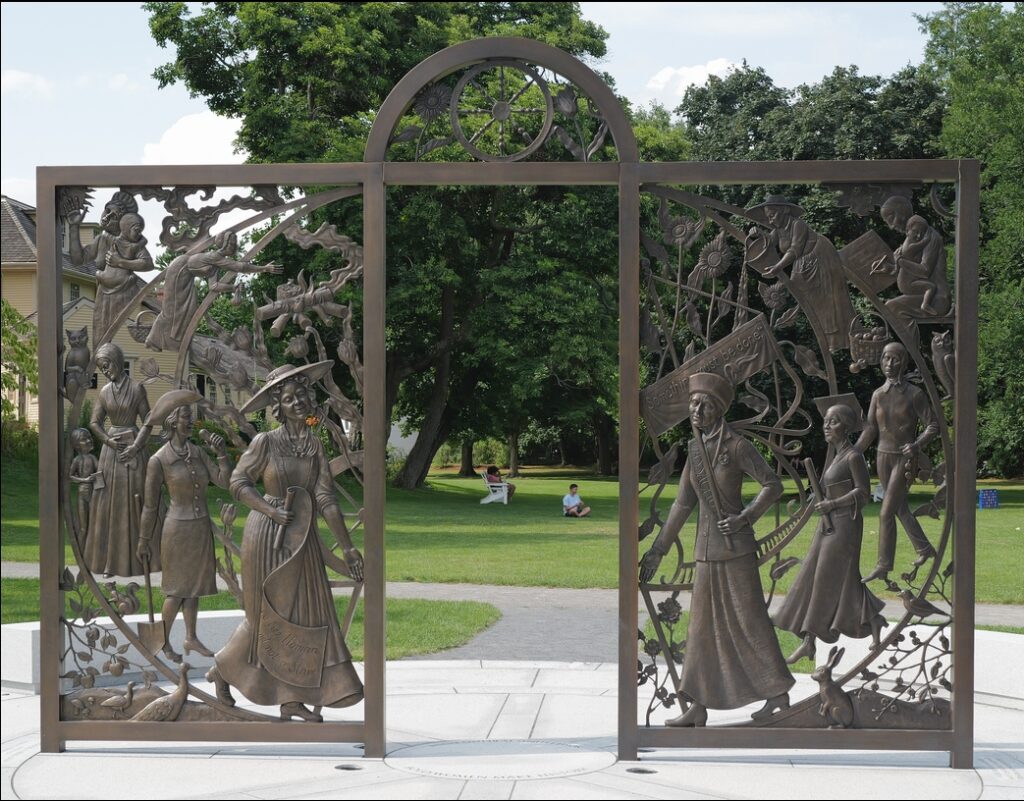
Bergmann’s initial remarks set the stage for a deeper exploration of her artistic process and her ability to bring historical figures to life. She used the historical backdrop of March 1775 in Acton – emphasizing the town’s position within the British Empire and the mounting tensions that would soon lead to the Revolutionary War – as a bridge connecting the past to the present and highlighting the relevance of historical understanding in contemporary society.
Bergmann discussed the Acton 250 committee’s commitment to showcasing previously marginalized historical narratives, including Black history and women’s history, a mission greatly facilitated by the digitization of historical sources. The work of the Acton sculptor was presented as a powerful tool for expressing these evolving historical understandings through her accessible and three-dimensional public sculptures.
Bergmann recounted her journey into sculpture and her dedication to creating art that serves a broader community and reflects both its temporal context and timeless themes. She detailed her meticulous process of sculpting portraits, including her experiences with the late Supreme Court Justice Ruth Bader Ginsburg, both for private and public commissions, illustrating her ability to capture the essence of her subjects.
She shared the compelling story behind her statue of Marian Anderson, emphasizing Anderson’s pivotal role as a civil rights icon and the historical significance of her 1939 concert at the Lincoln Memorial. She also discussed her sculpture of Frances Perkins, highlighting Perkins’s vital contributions to the New Deal and the integration of historical narrative into her artwork.
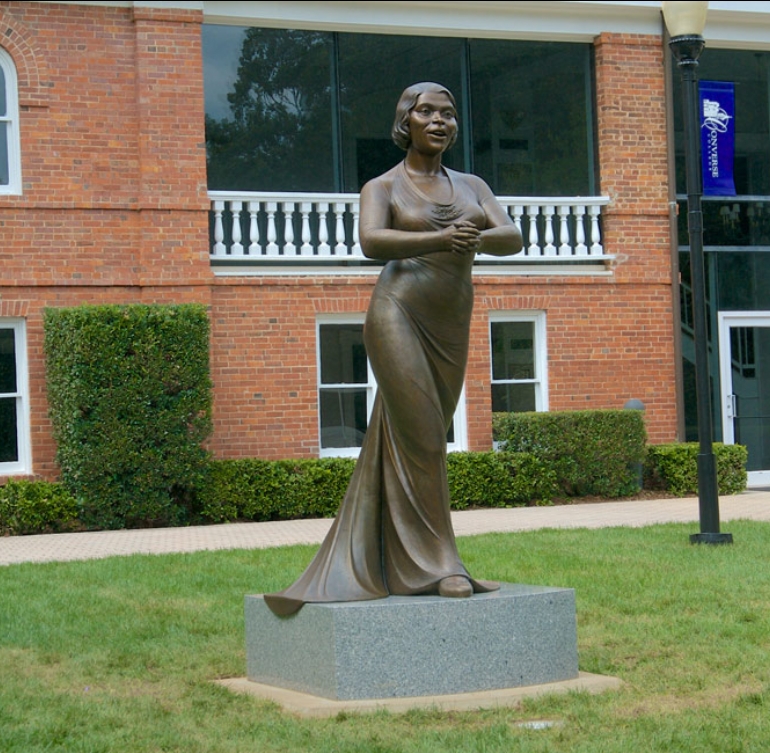
Additionally, Bergmann explained the creation of her statue of Lucy J. Brown, a local hero in Ithaca, New York, focusing on the importance of portraying her active and community-oriented spirit. The lecture then shifted to a broader discussion of monuments and memorials as symbolic forms, referencing examples such as the Obelisk and the Statue of Liberty.
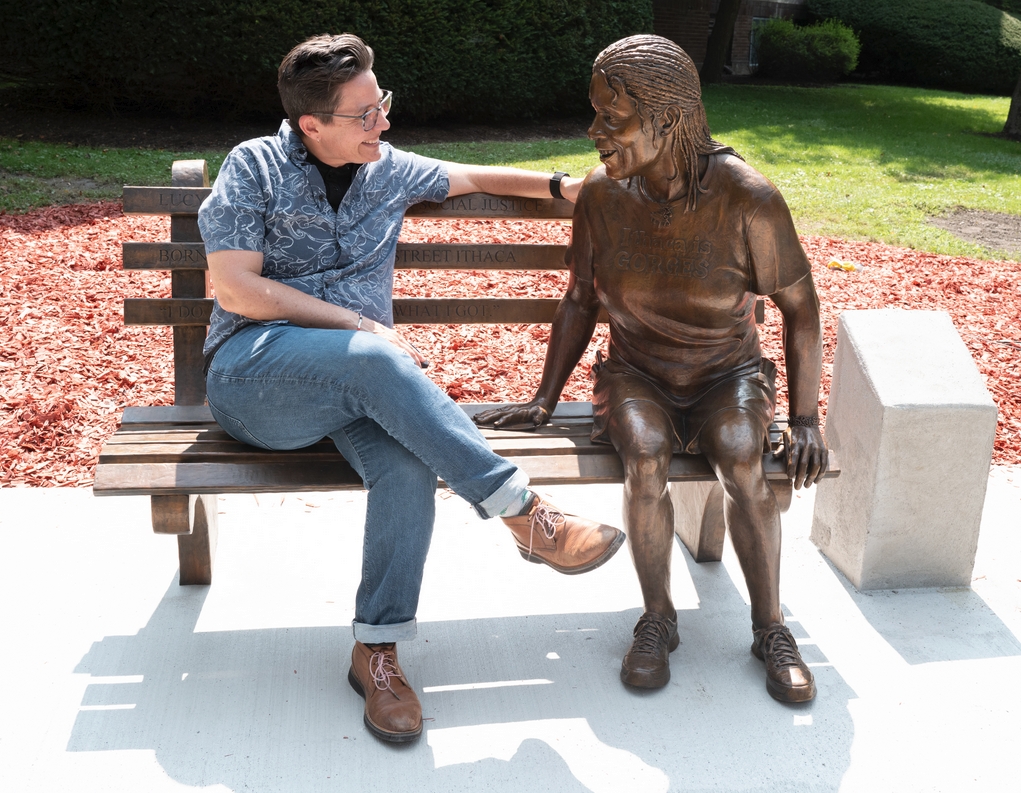
Bergmann elaborated on her Boston Women’s Memorial, explaining her deliberate design choices to bring the women down from their pedestals and represent diverse aspects of women’s contributions. She described her thorough research into Phillis Wheatley, the first published African American poetess in American history, and the process of creating her statue, including the use of multiple models to capture the complexity of Wheatley’s story.
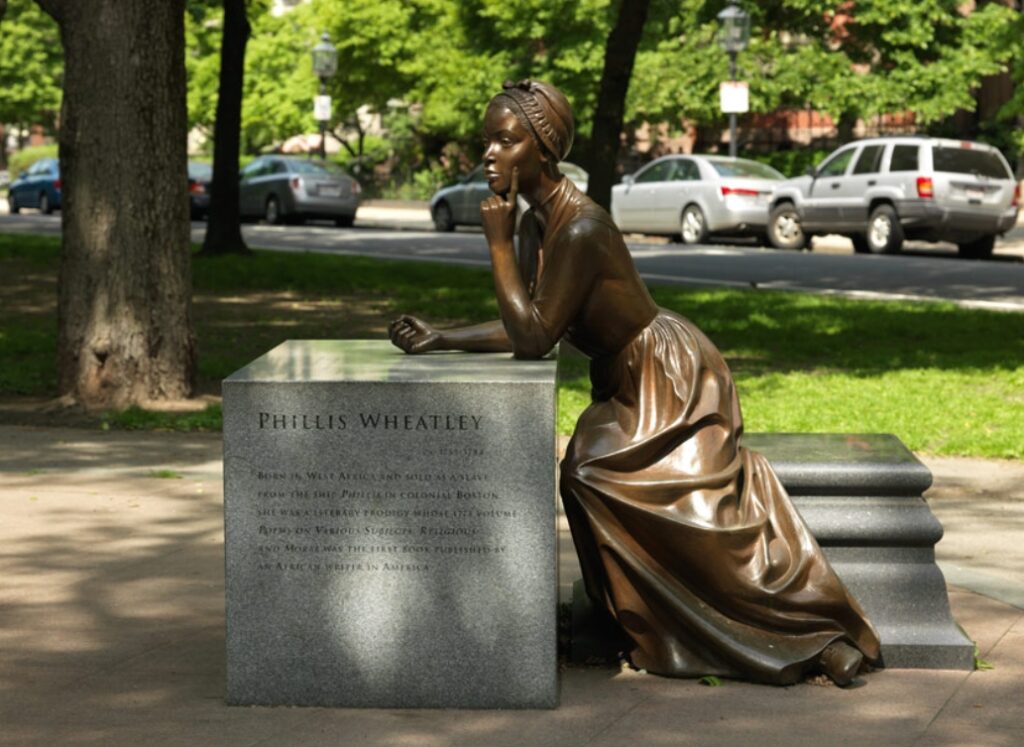
Bergmann further discussed her Franklin Delano Roosevelt (FDR) Hope Memorial in New York, emphasizing the efforts made to ensure accessibility for all visitors. Finally, she concluded by describing the creation of the Women’s Monument for Central Park, focusing on the collaboration of Susan B. Anthony, Elizabeth Cady Stanton, and Sojourner Truth, and her efforts to portray their dynamic interactions.
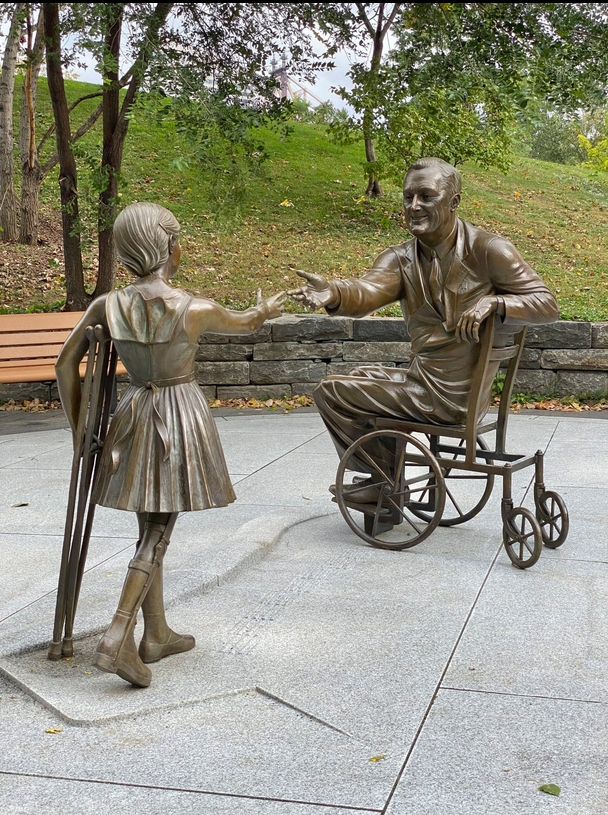
In the question and answer period, Ms. Bergmann revealed that her next project, still in its early phase, will be a commission for the City of Fitchburg.
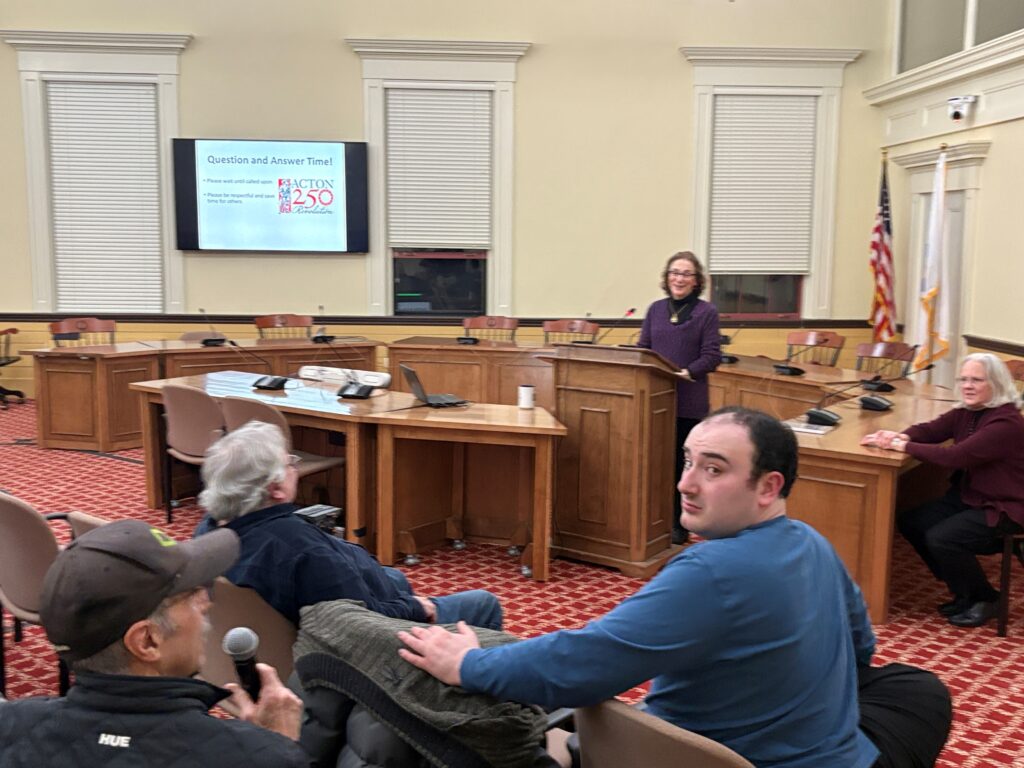
You can watch the entire 70-minute lecture on Acton TV by clicking on “Acton 250 Lecture Series: A Sculptor Speaks for Her Statues.” You can also visit the Acton 250 Events section of the Town of Acton’s website.
James Conboy and Greg Jarboe both write frequently for the Acton Exchange. James usually covers sports, and Greg is the beat reporter for the Council on Aging, but they show their wide interests and versatility in covering this arts and history story.
